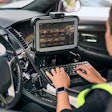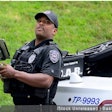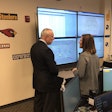The devastating earthquake and tsunami that hit Japan, as well as the ongoing nuclear power plant malfunctions there, serves as a grim reminder that similar disasters can occur here in the U.S.
We need to better equip police officers, firefighters and other public safety personnel, so they can respond immediately and cohesively to emergency situations.
Cutting-edge technology that can protect the public exists, yet for far too long incompatibility has plagued public safety communications networks. In an effort to solidify market share, companies providing emergency personnel with communications equipment have configured products so software from one company can't work with hardware from another.
This has forced consumers to buy from the same brand, resulting in "monopolies" that inflate prices and make it nearly impossible to achieve true interoperability in public safety. To push public safety forward, we need a neutral partner with extensive experience in network development — one that can foster multi-vendor interoperability while assessing and advancing communications products.
That's about to happen.
The Public Safety Communications Research program established by the U.S. Department of Commerce in Boulder, Colorado has been a good start. Now public safety will benefit even more, because a world-class research institute and leader in radio communications networking technology takes a third-party approach to public safety communications issues that will include LTE (Long Term Evolution).
The University of California, Los Angeles (UCLA) has recently announced that it's committed to the development of public safety communications through a partnership with Raytheon that will establish the UCLA Center for Public Safety Network Systems. Research at the center will focus on increasing interoperability between public safety agencies and creating standards for public safety networks. Raytheon is contributing $1 million over three years to jump-start the program.
Building an interoperable and national public safety communications network requires this model of investment. Through neutral testing and analysis, researchers can figure out which systems are compatible and help create communications methods that advance public safety and are free from market obligations, profit margins and competitive concerns.
Independent research is crucial during this process in providing unbiased assessments of the utility and abilities of communication tools like radios, video systems command and control, and dispatch systems, as well as the logistics of building an integrated LTE network.
Third-party involvement in communications technologies, which will take place at the UCLA center, lets us all move forward and make the case for changes that are long overdue. Public safety will finally have a place to go to fill specific operational needs.














